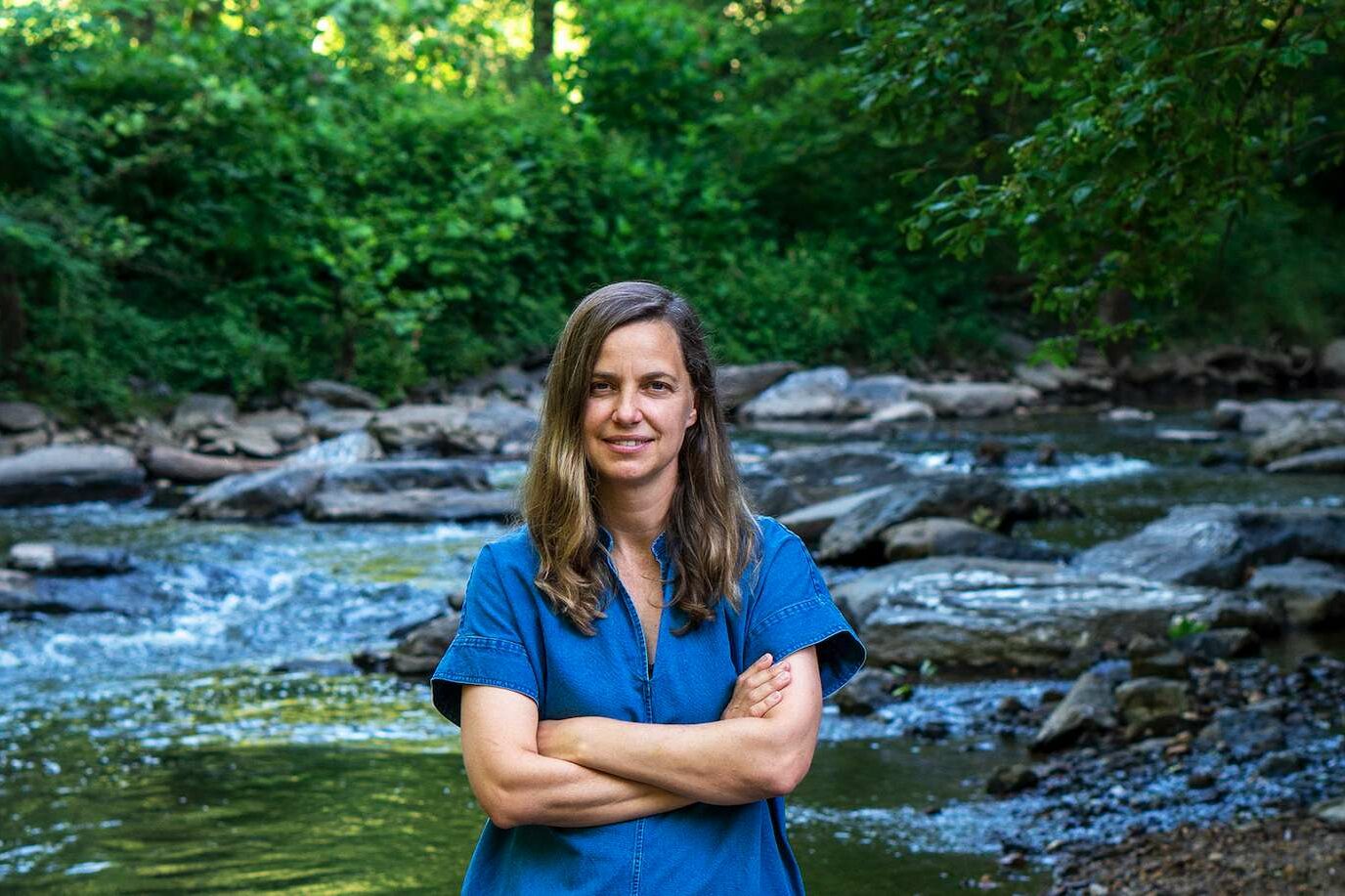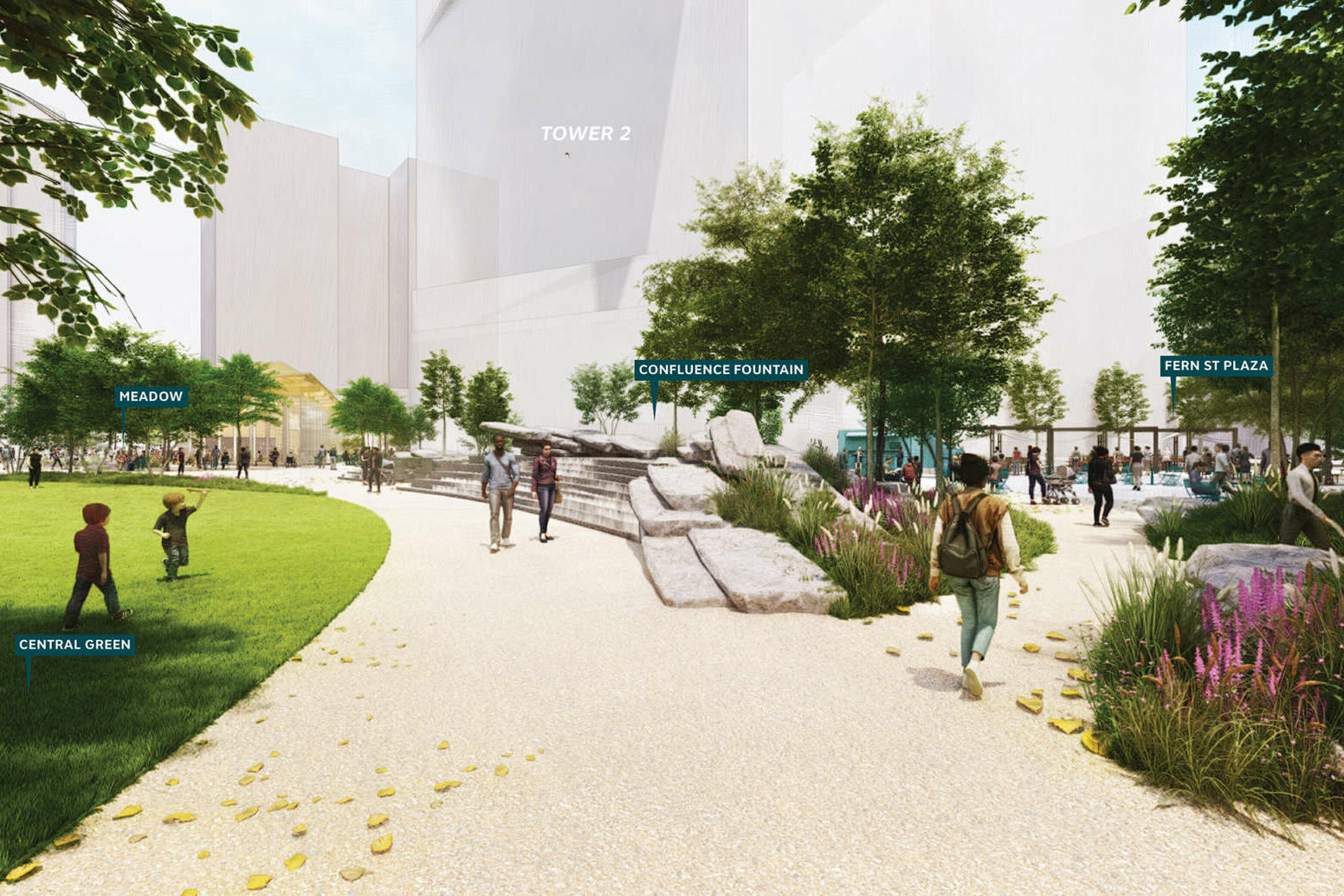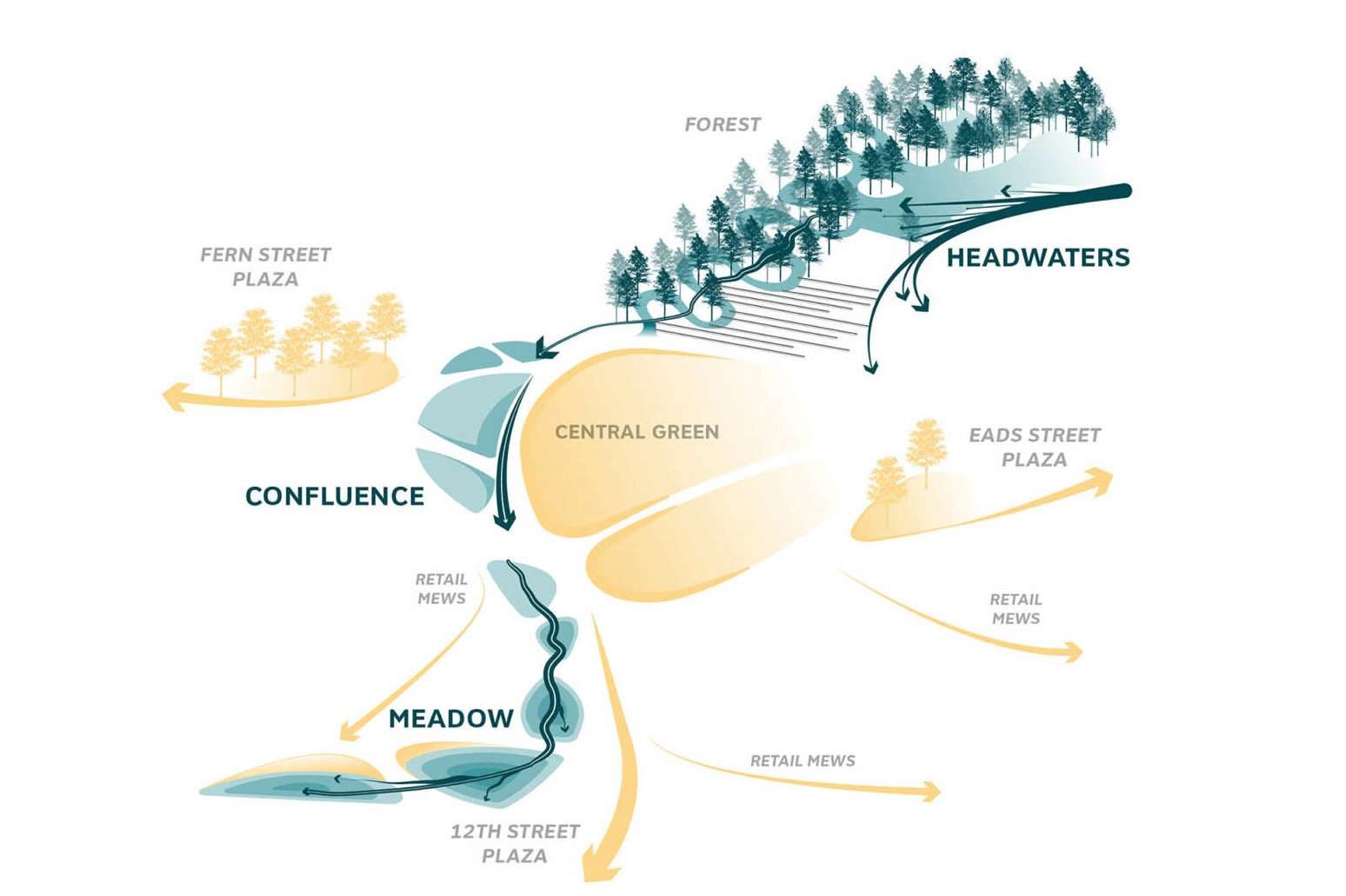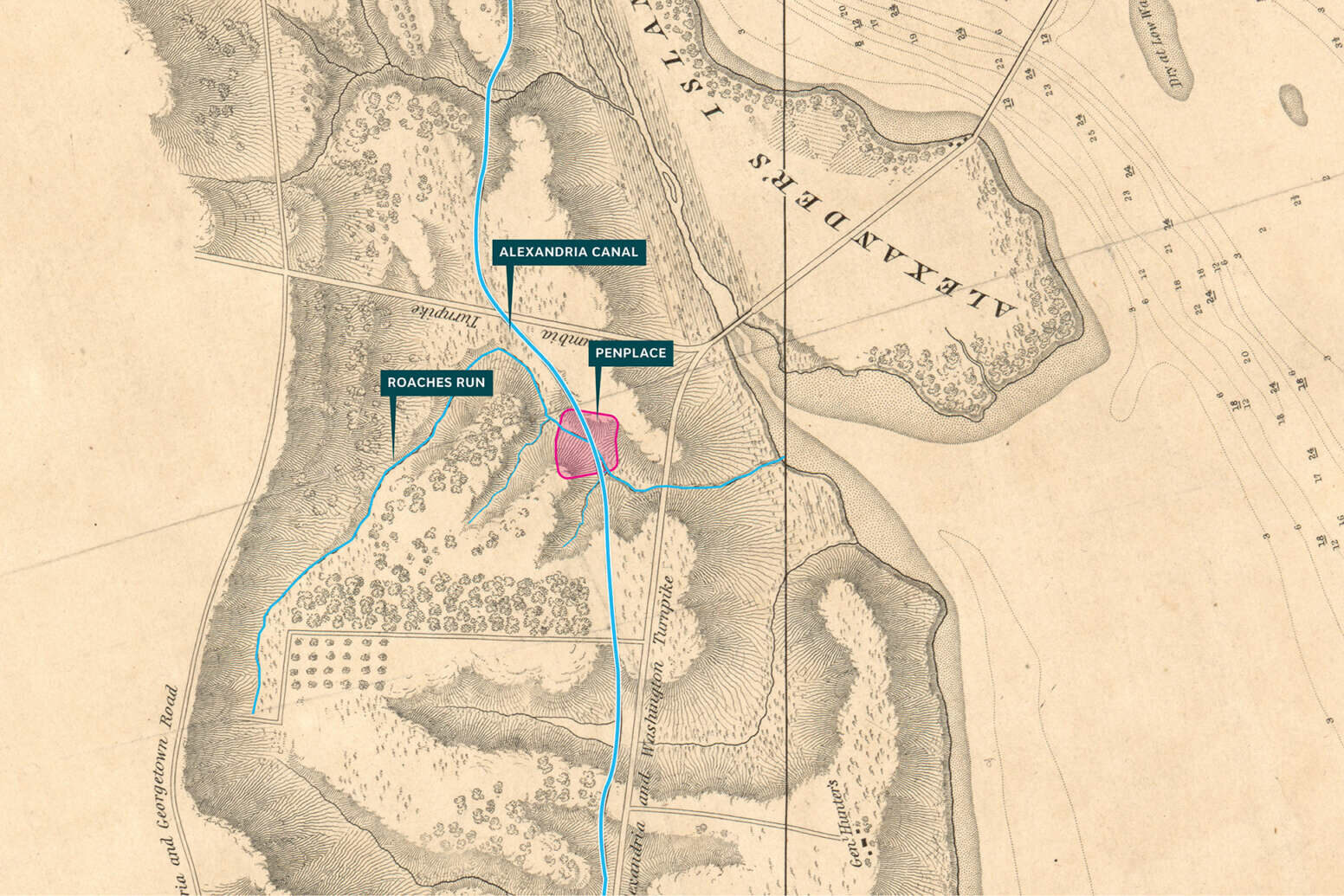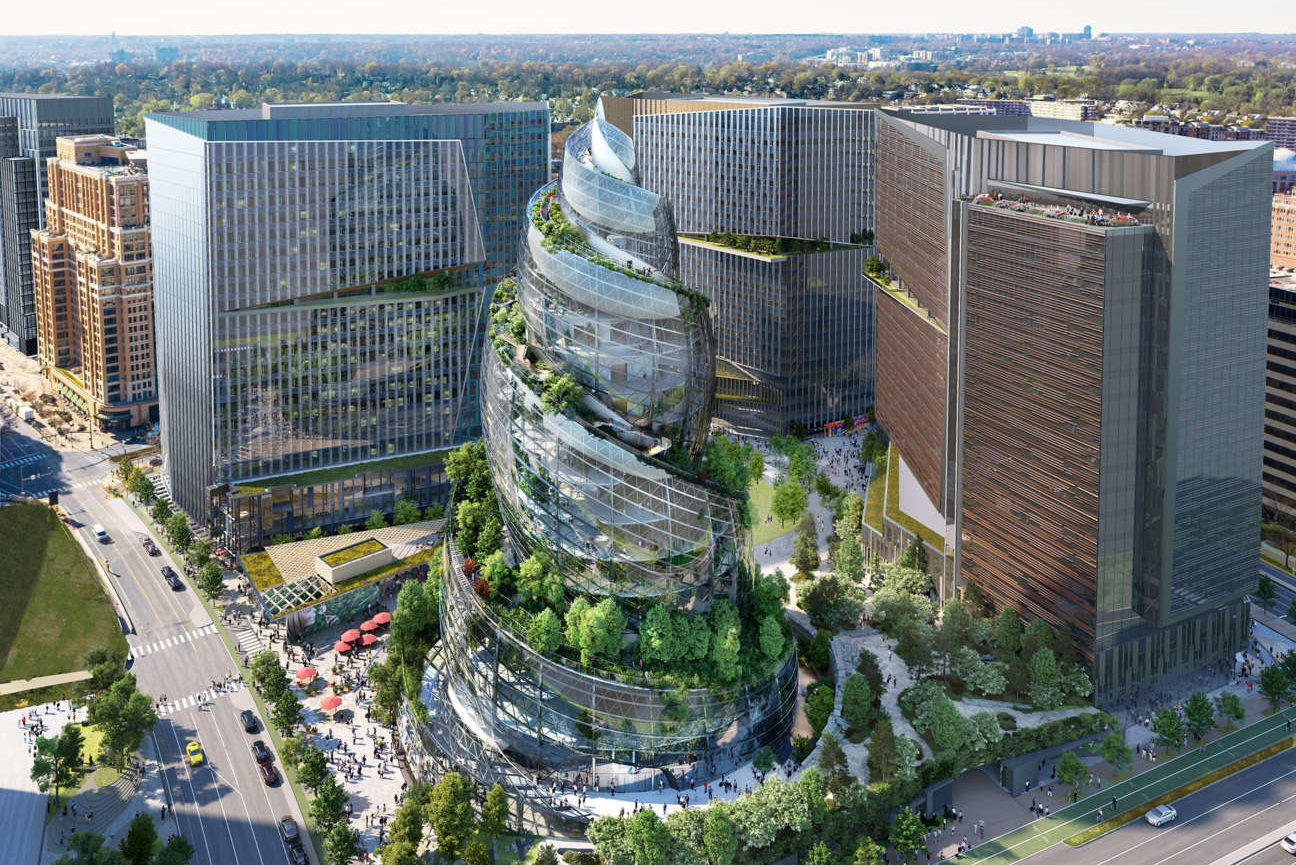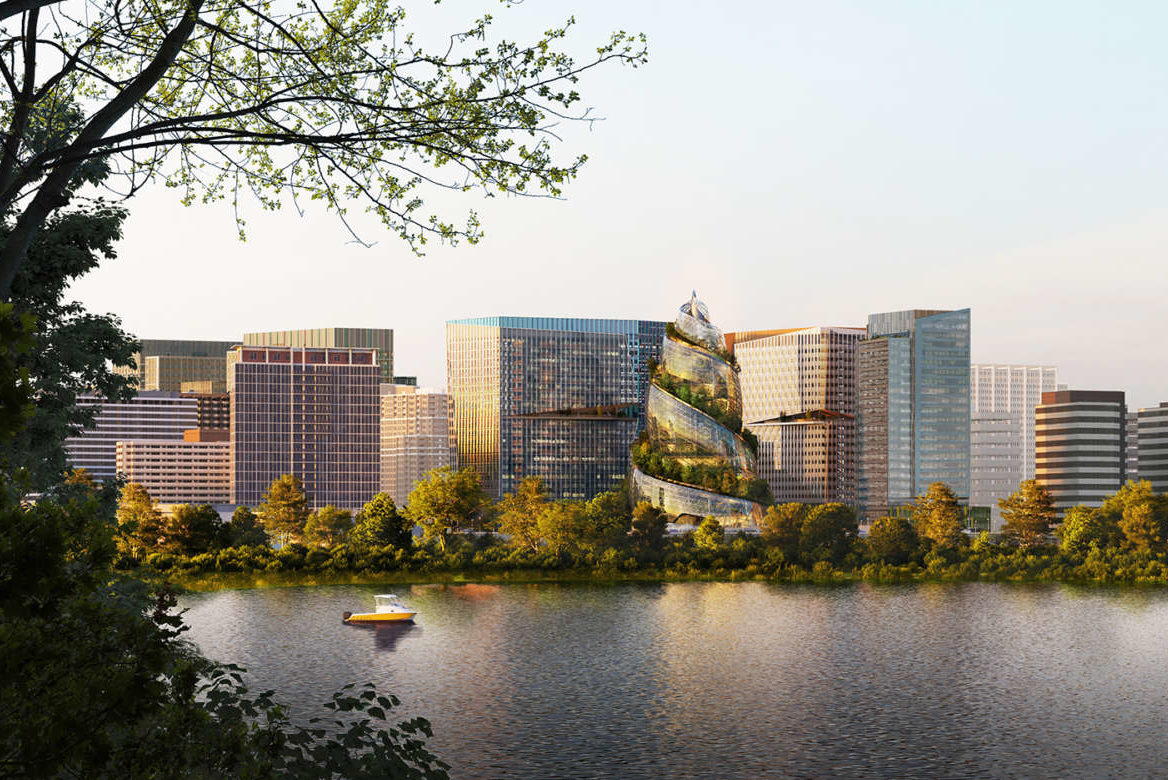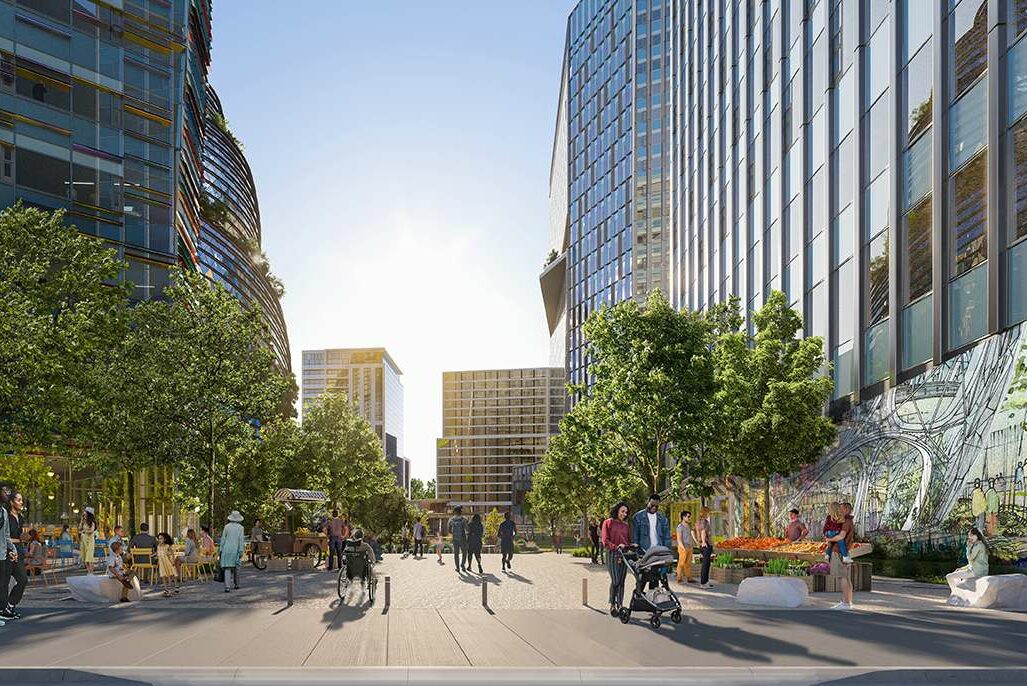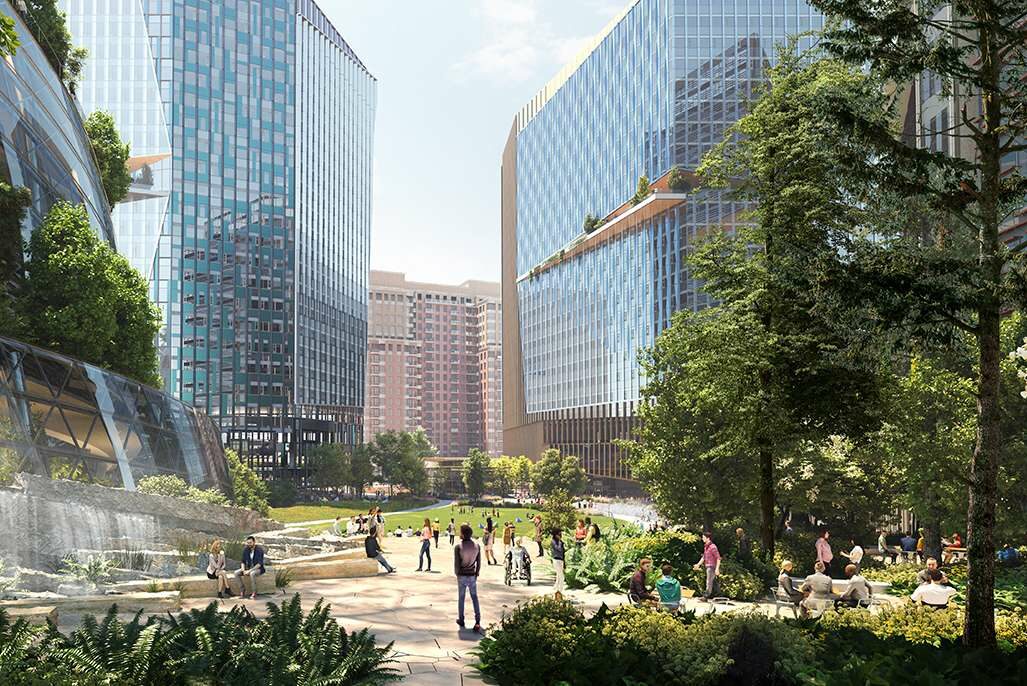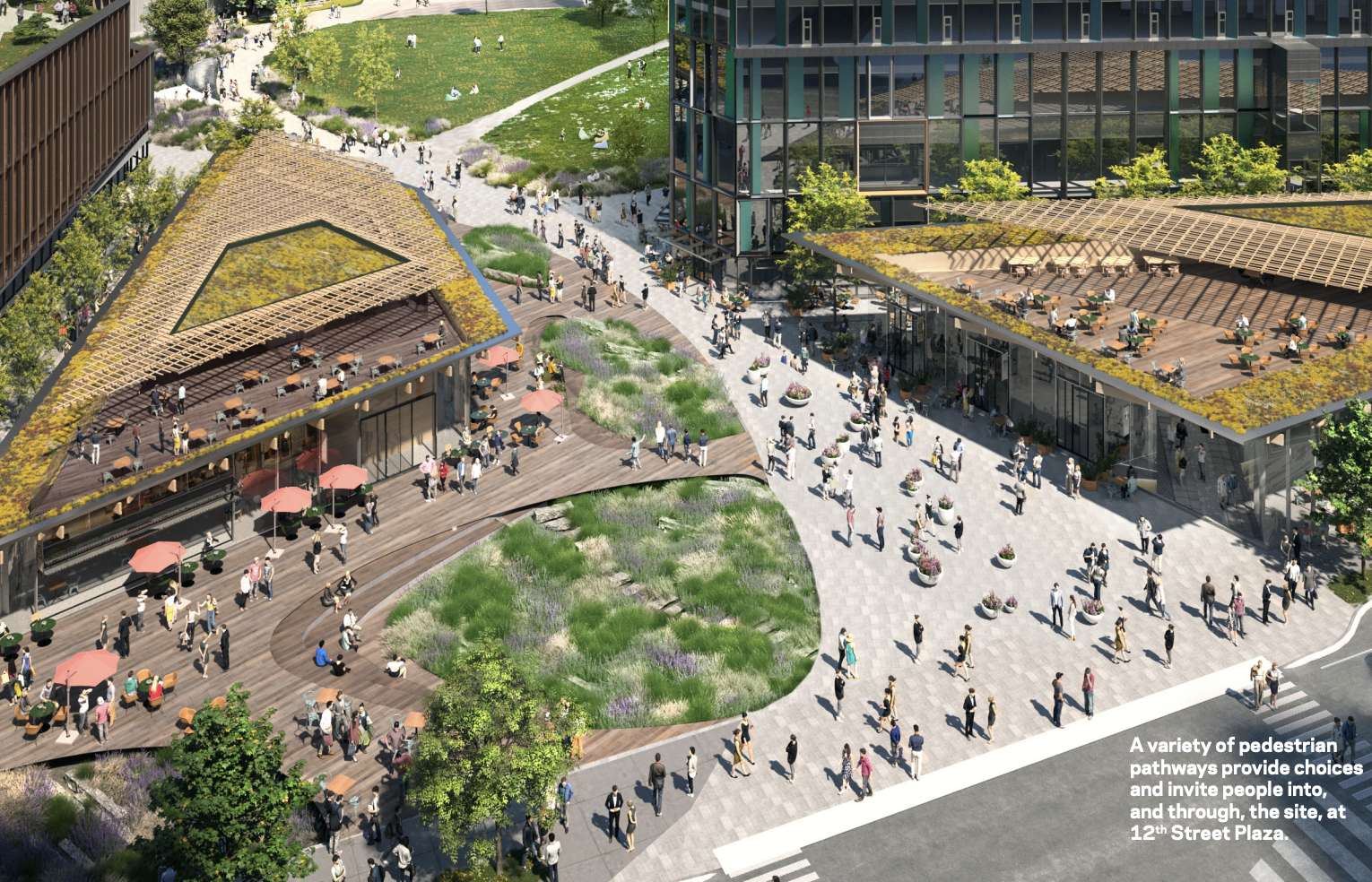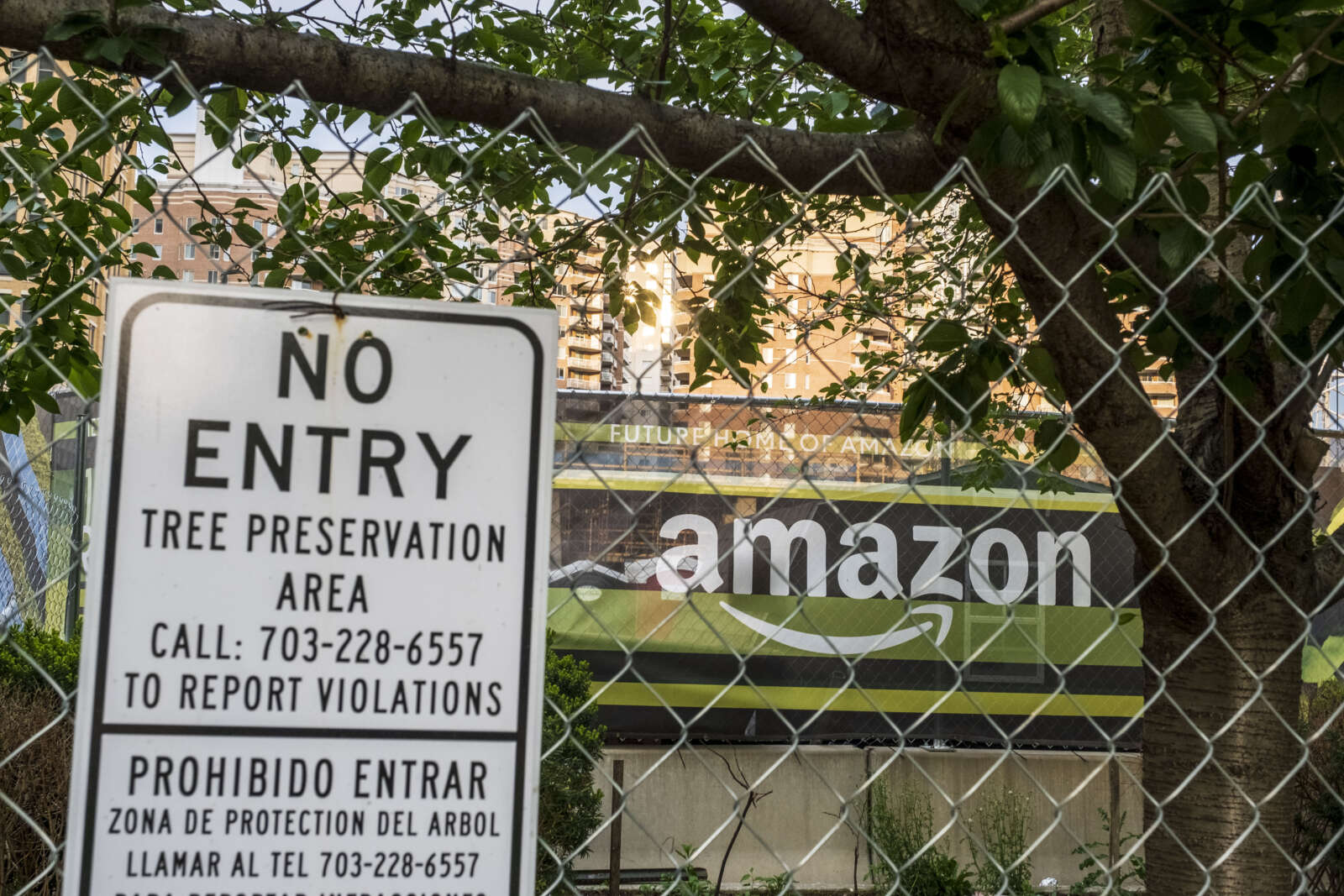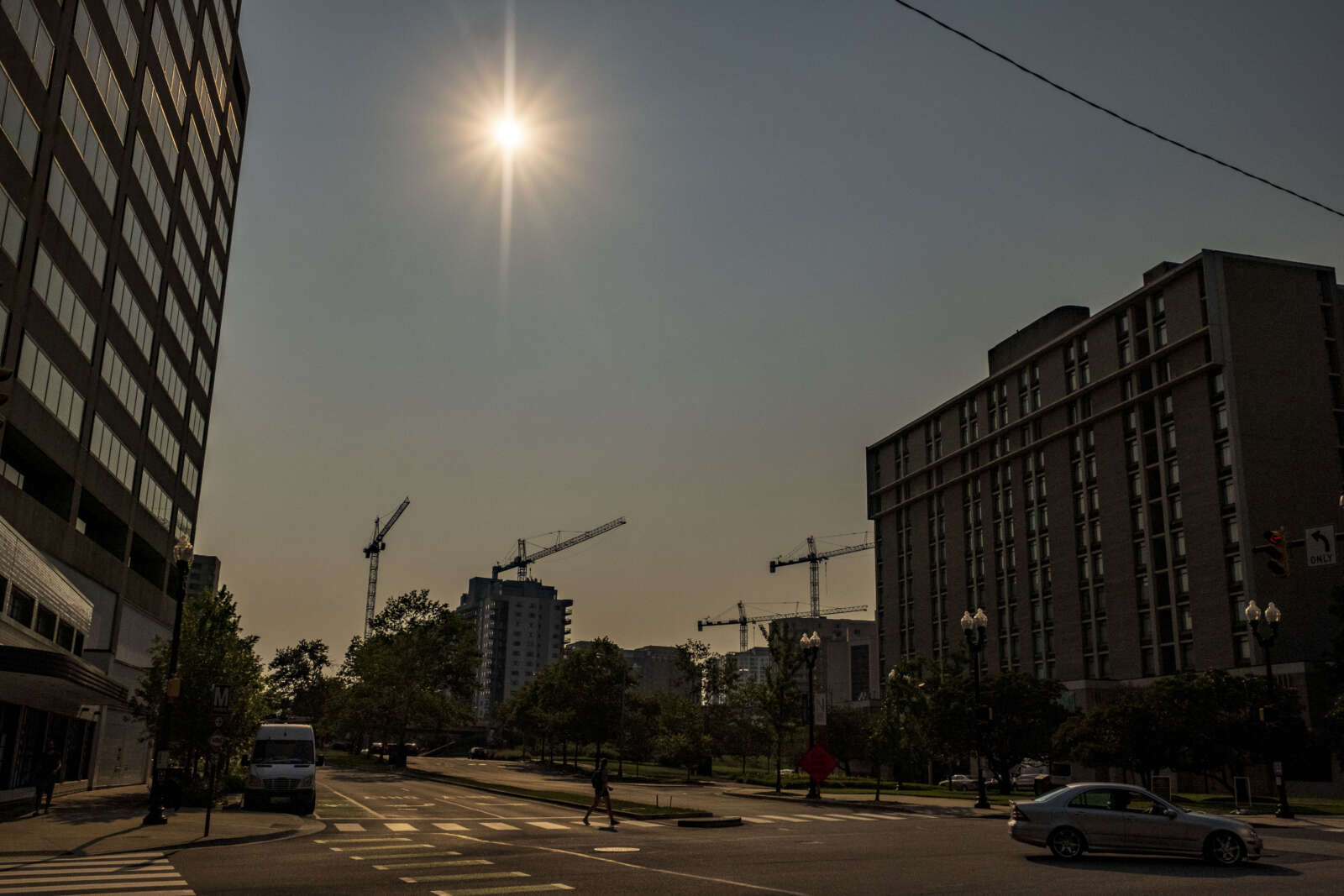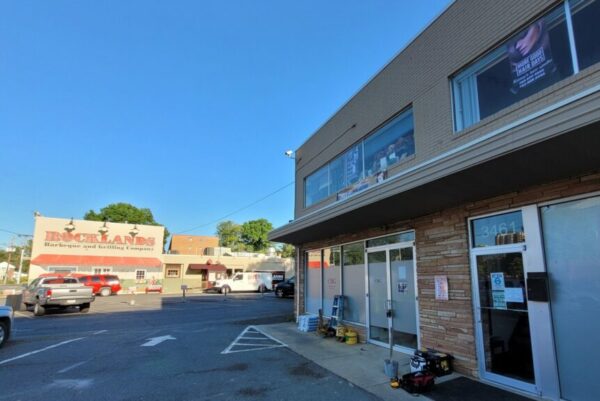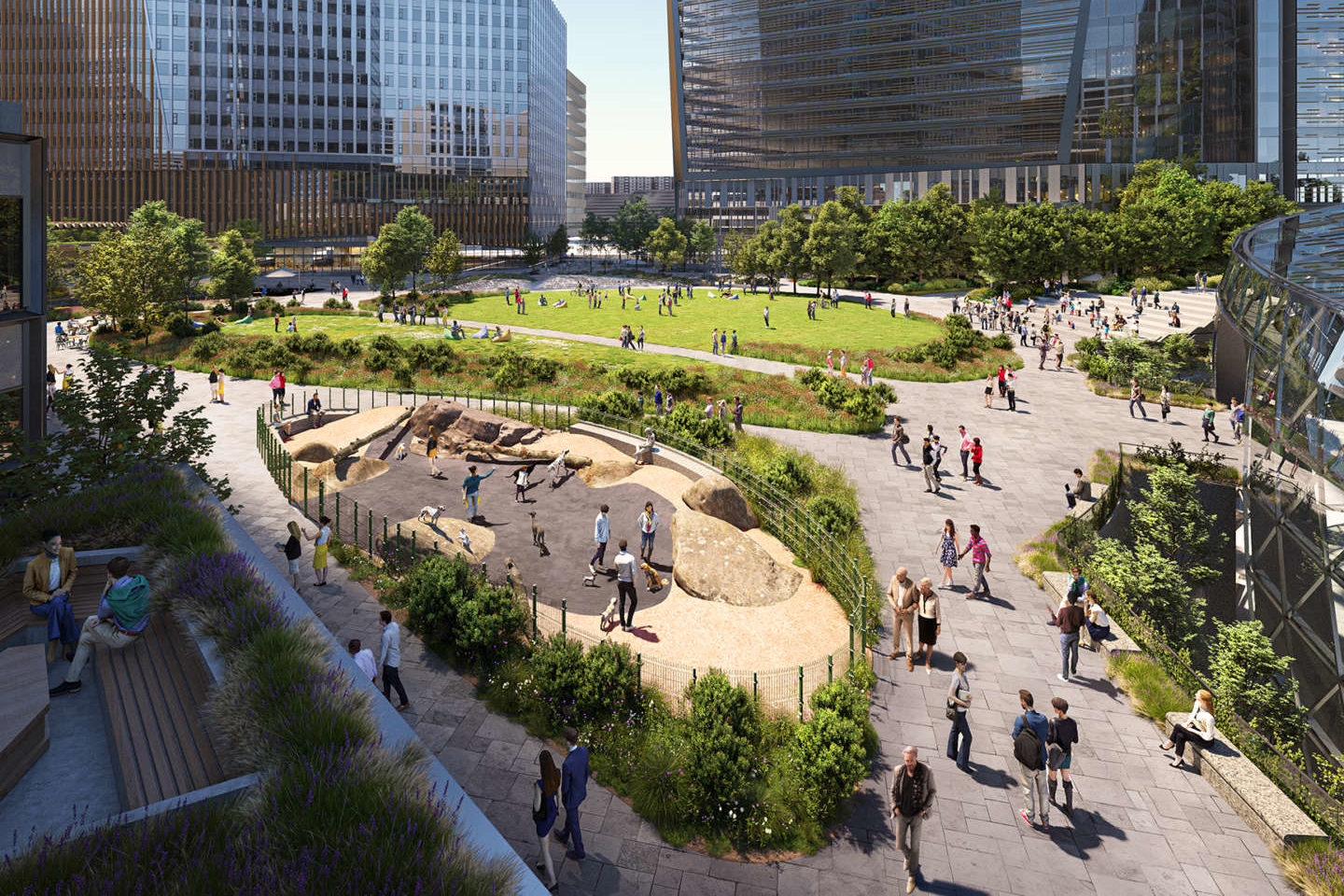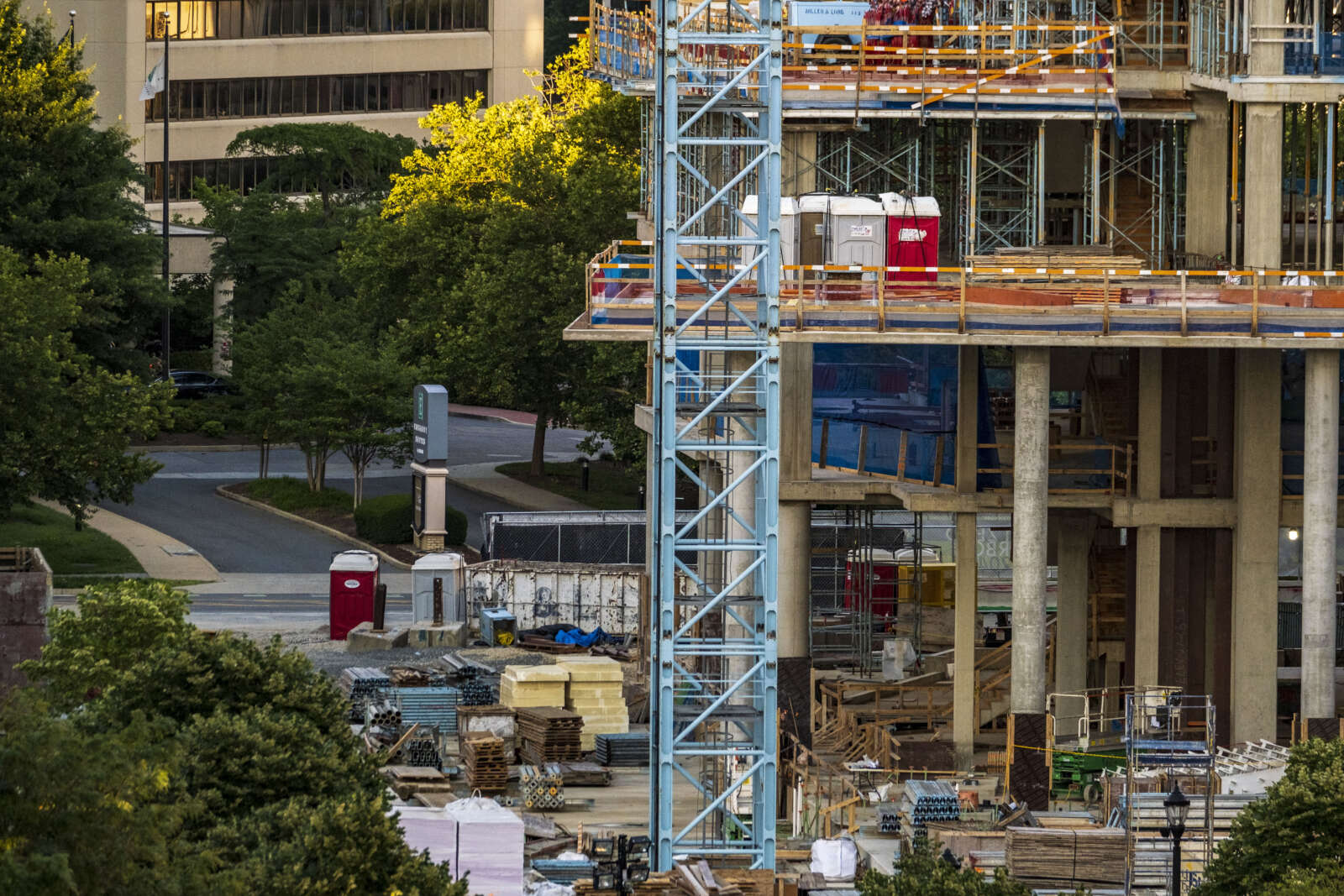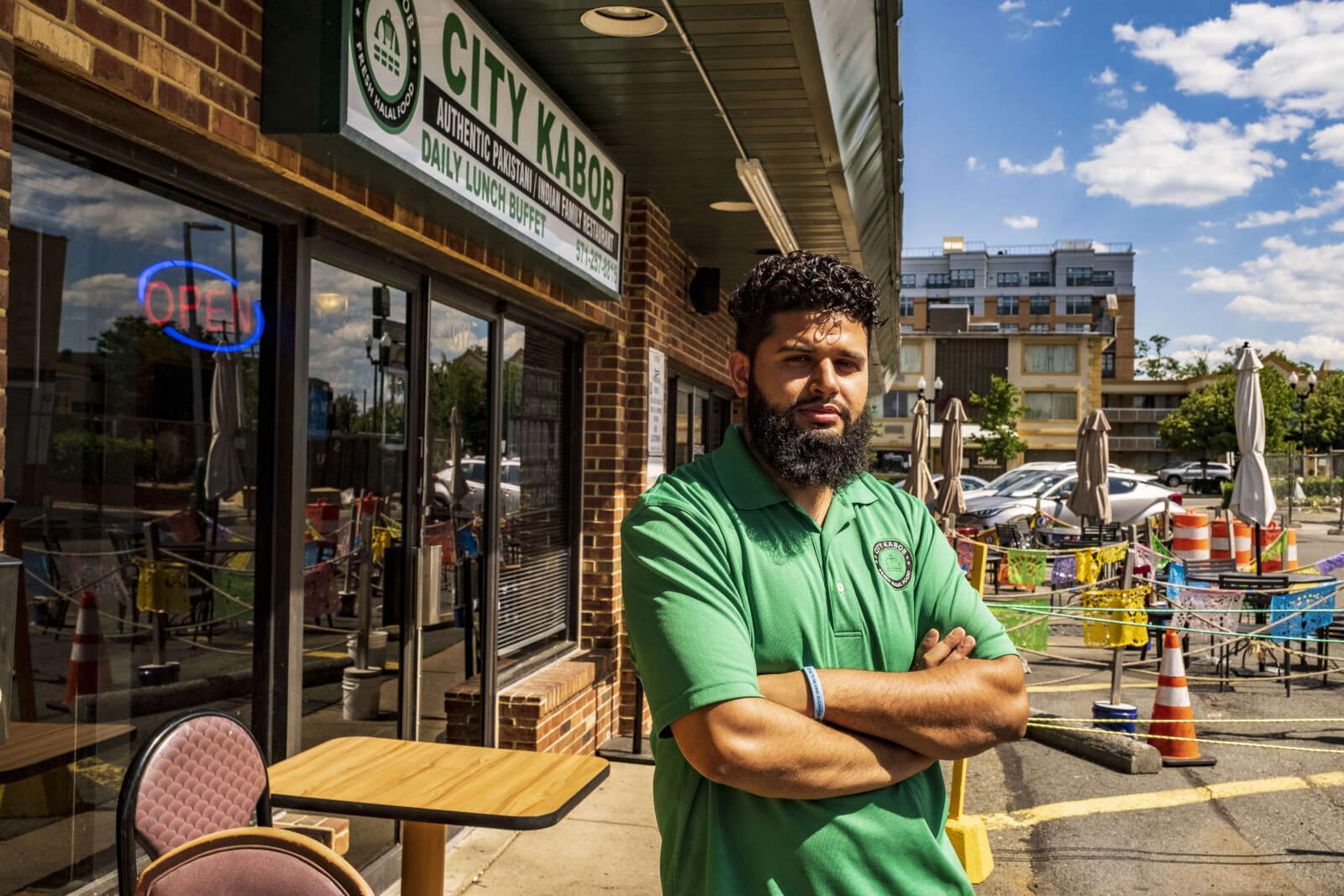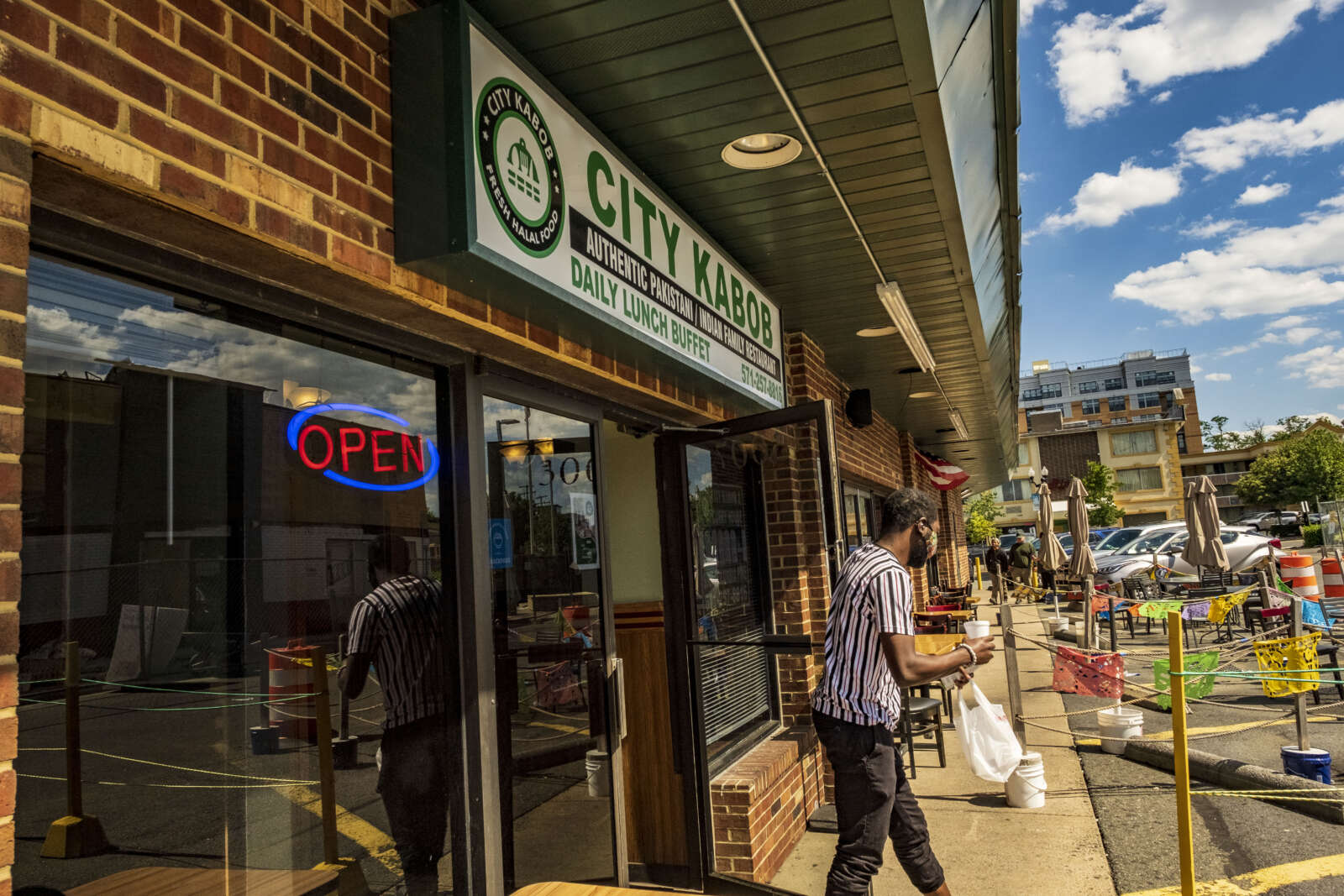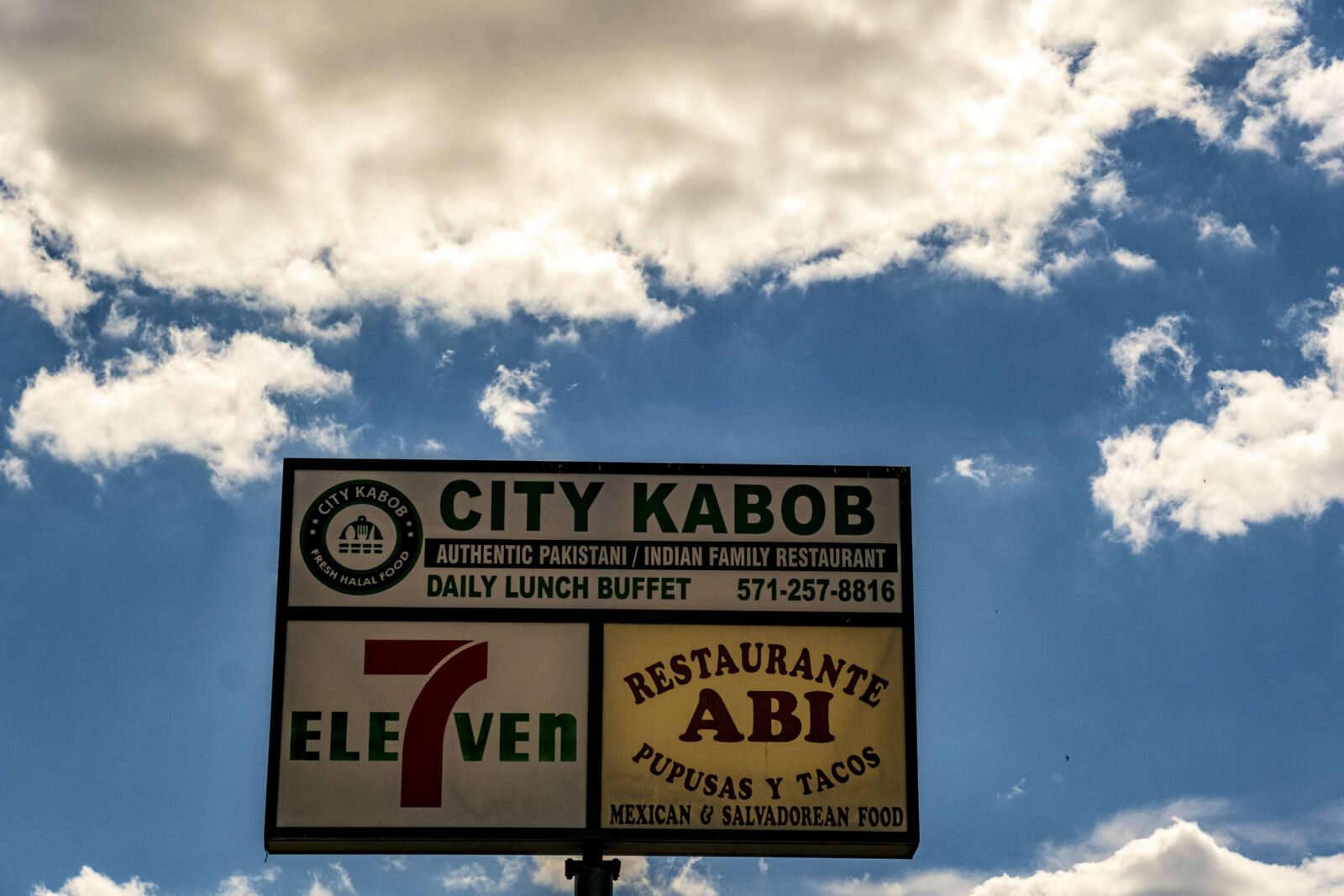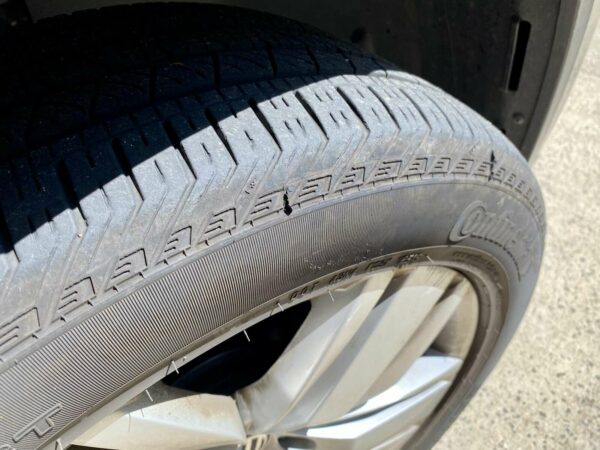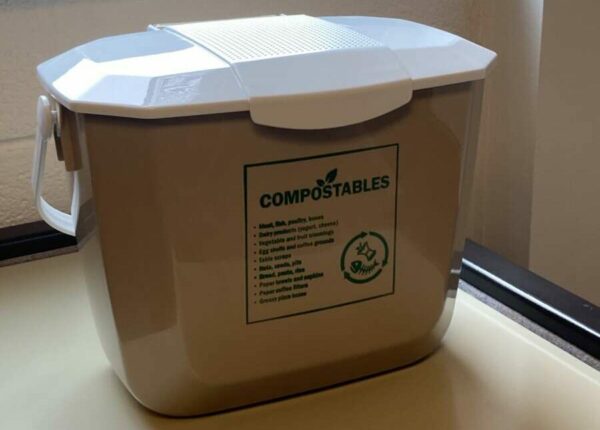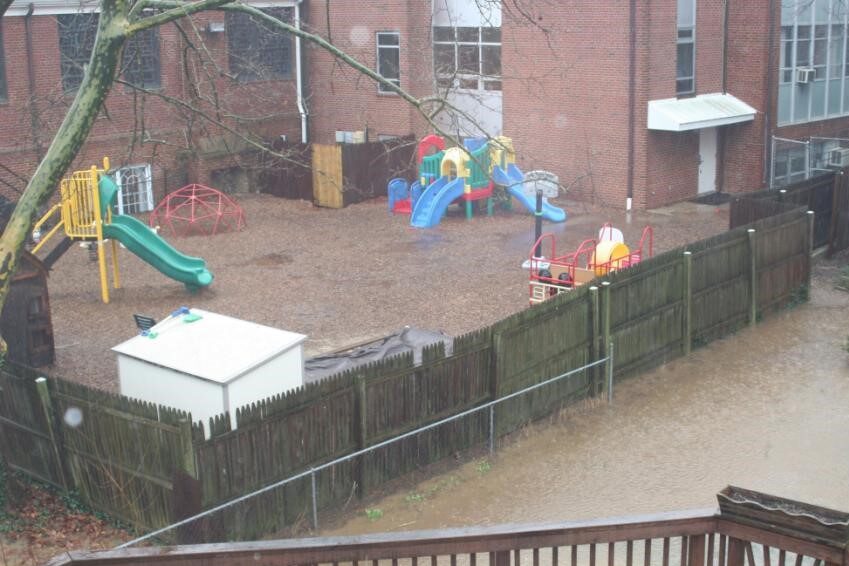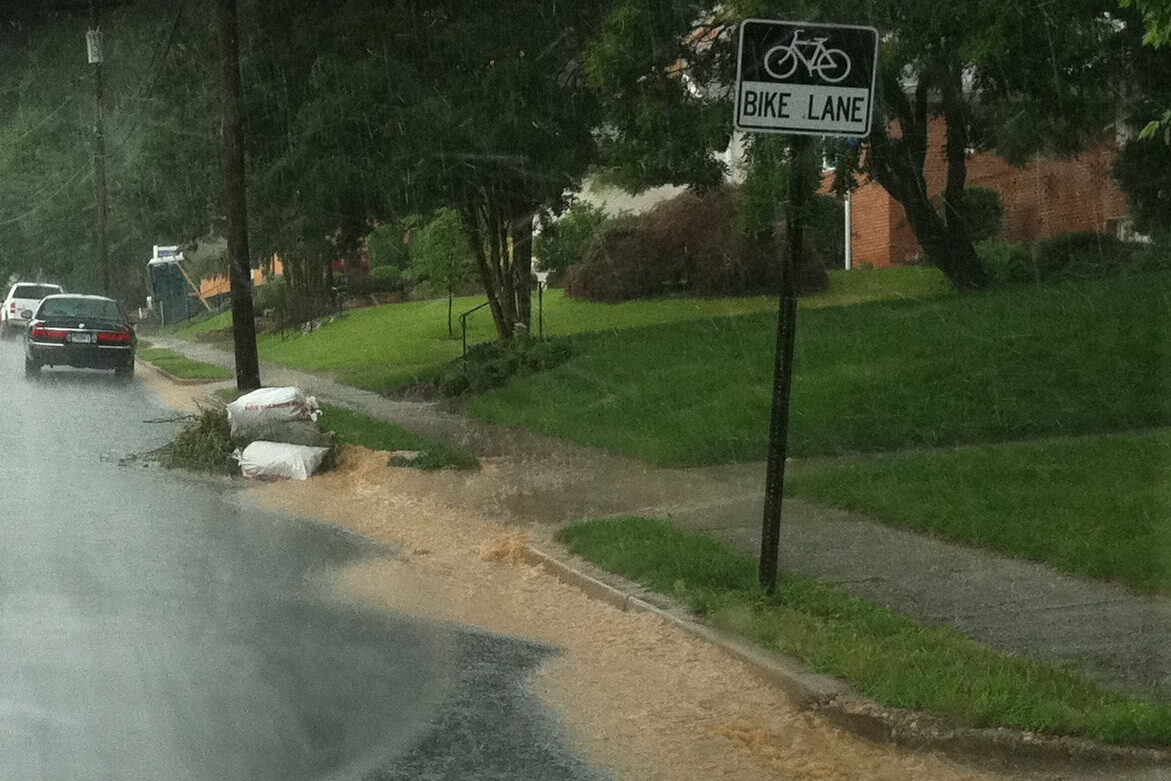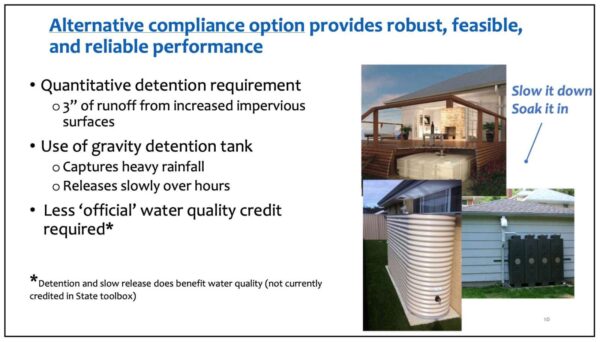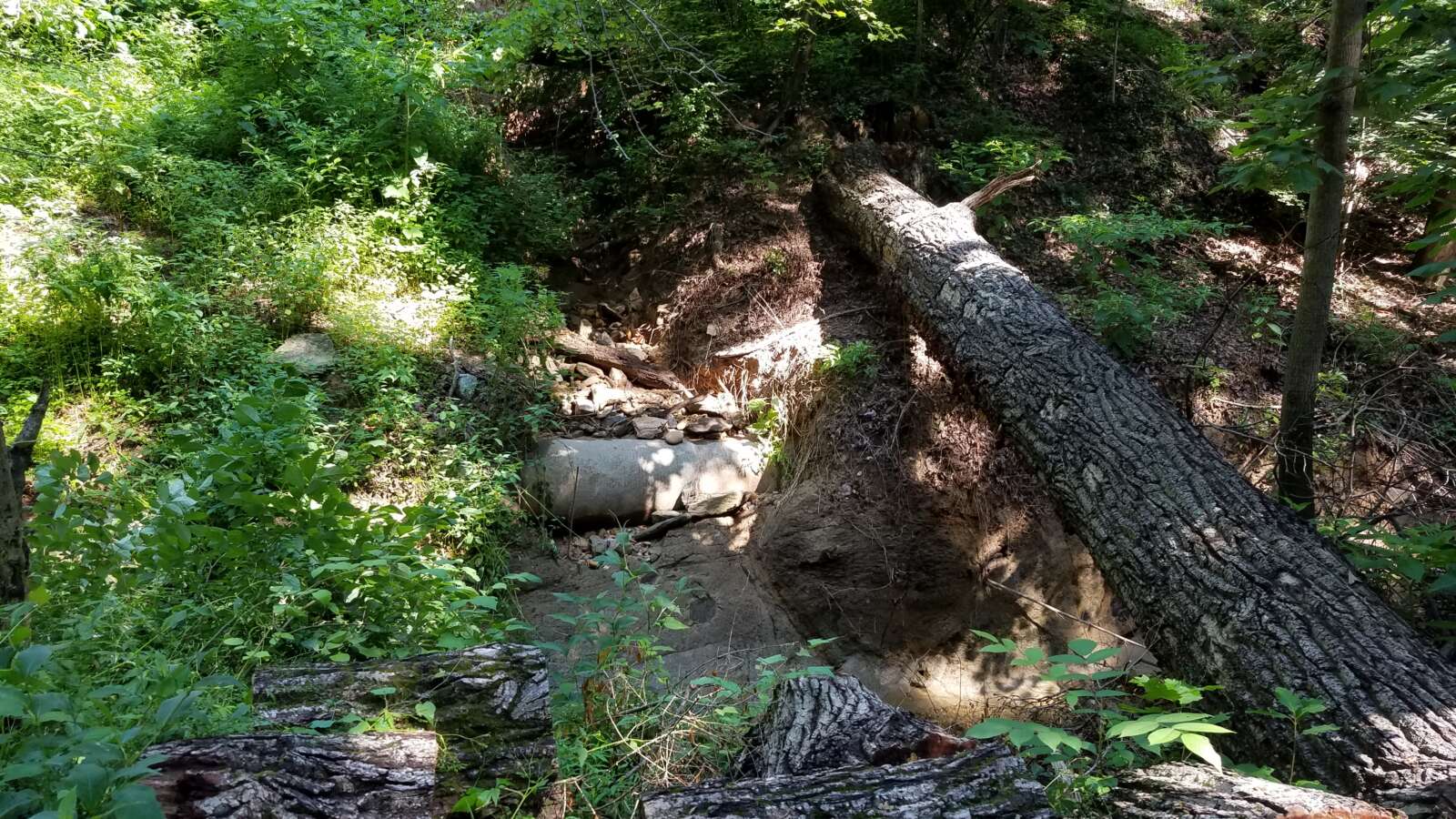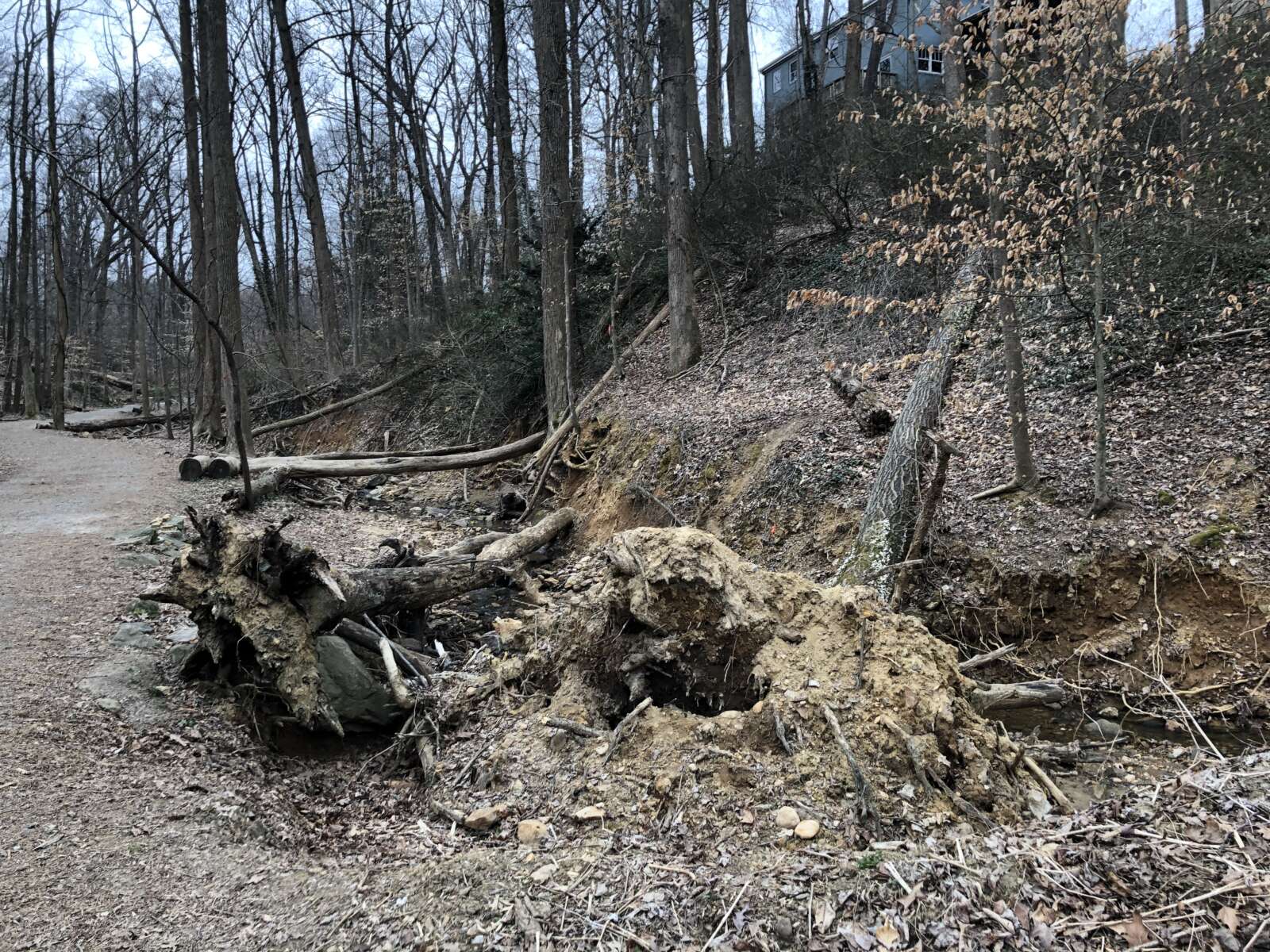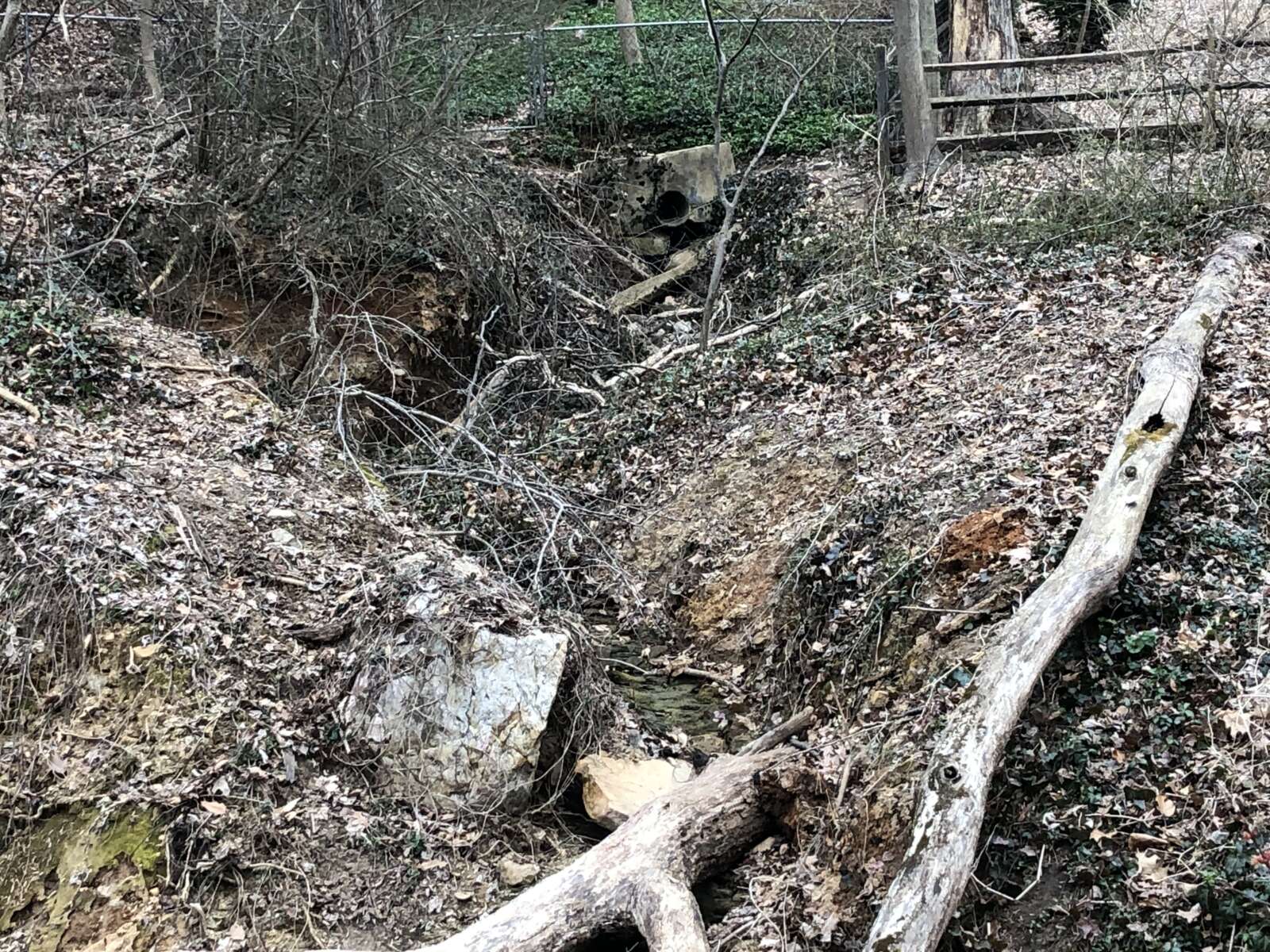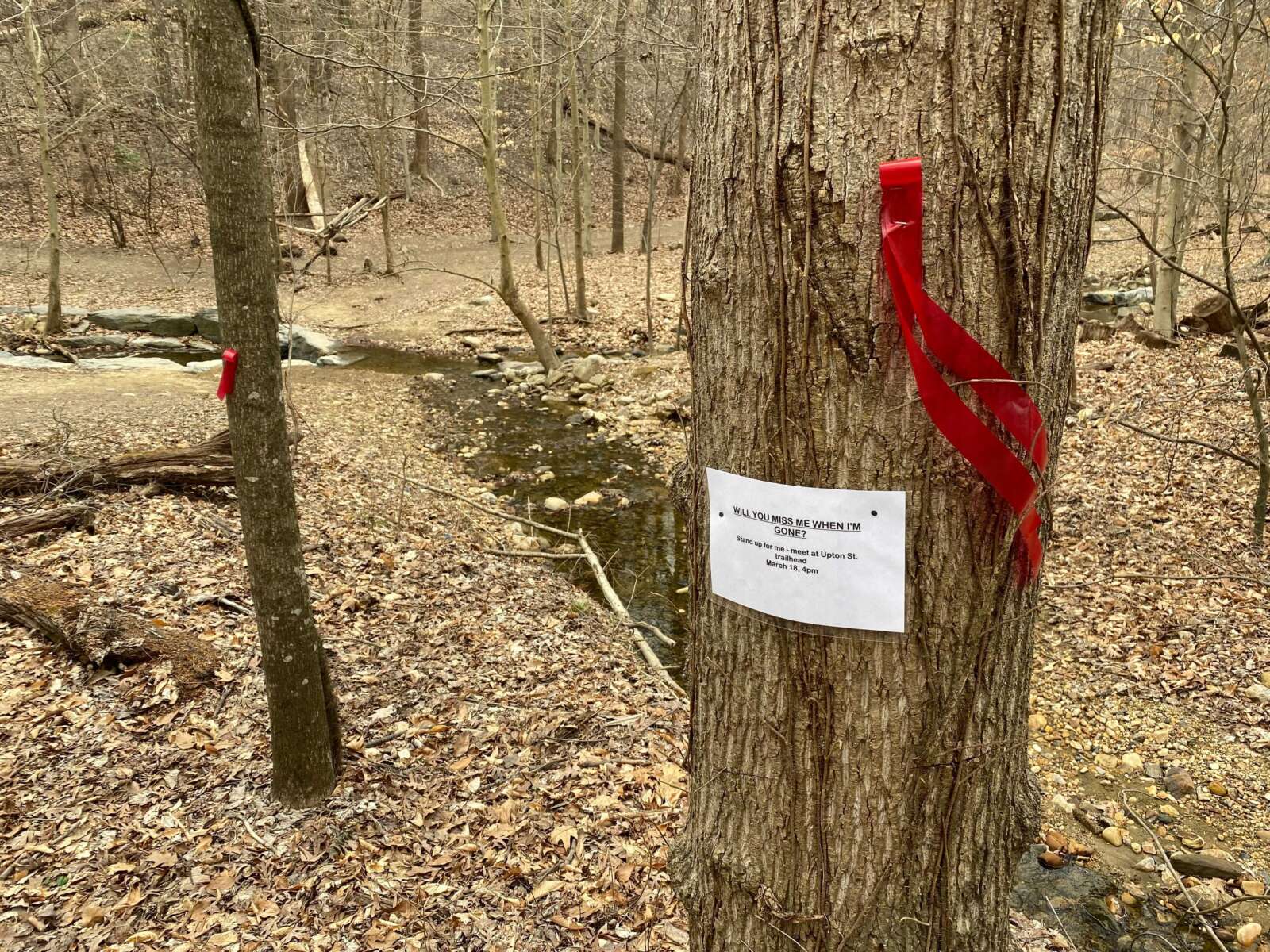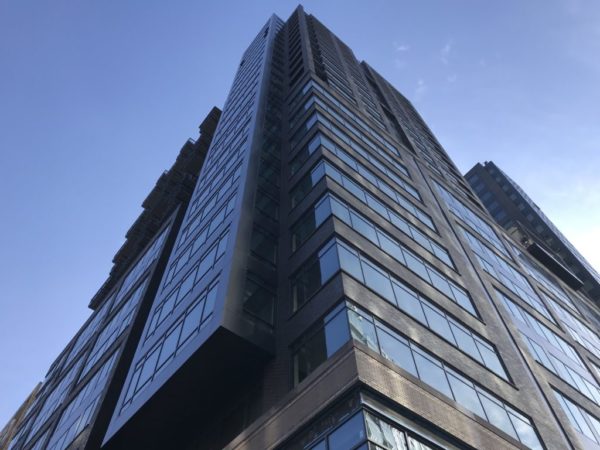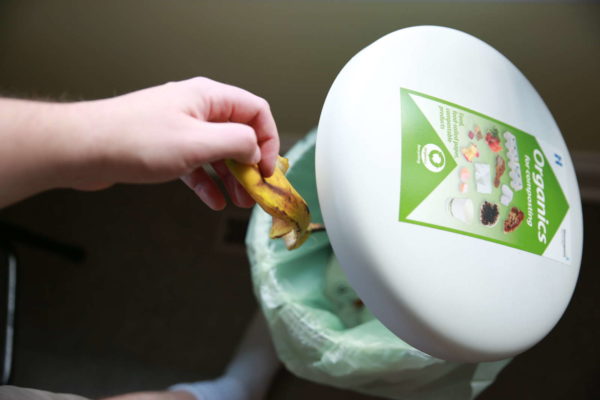(Updated at 9:45 a.m. on 7/8/21) Three water “elements” will be the focal points of the planned park space at PenPlace, the second phase of proposed Amazon’s HQ2.
And Kate Orff, the landscape architect designing this park, is drawing her inspiration from Roaches Run and the historic Alexandria Canal, as well as the churning waters of Great Falls Park and the sylvan streams of Rock Creek Park.
The park at PenPlace will run north-south through the 11-acre site situated at the intersection of Army Navy Drive and S. Eads Street. PenPlace will be anchored by a lush, futuristic building, dubbed “The Helix,” and feature three, 22-story office buildings with ground-floor retail.
Orff said aspects of the waterways inspiring her will come together to form three distinct “water moments” throughout the 2.5-acre park, said Orff, the founder of SCAPE — a landscaping design firm — in a new video.
This video was published today (Wednesday) in a blog post, along with pictures of her proposed designs and of the waterways that captured her imagination. These designs are not yet finalized.
“In homage to the historic hydrology of the site and local waterways in nearby Rock Creek Park and Great Falls Park, SCAPE’s design incorporates water features on a north-to-south axis across the park, interpreting the natural elements of cascades and streams at a human scale,” the blog post said.
PenPlace’s grounds will be publicly accessible and compliant with the Americans with Disabilities Act, the blog post said. Throughout the 2.5 acres, visitors will be immersed in “botanical experiences” incorporating “beloved local ecosystems.”
There will be three water elements: a “Headwaters” fountain at the northern end of the site, creating a cooling climate in the forest plaza. There will be a central confluence next to a green where people can gather. Finally, there will be a stormwater meadow that will filter stormwater and serve pollinators. (An earlier version of this article incorrectly stated the three elements will be connected via a river.)
The grounds will pay tribute to the forests and meadows of the mid-Atlantic that these waterways nourish. For Orff, the project allows her to tap into her roots.
“I’m from this area, so I have a deep love for the mid-Atlantic region, and the Appalachian cove forests, the Blue Ridge Mountains, the tributaries of the Potomac,” said Orff, a Maryland native and University of Virginia graduate, in the video. “We’re going to try to bring a magnified version of these ecosystems into this park at HQ2. It will feel different. It will feel special. It will feel unique.”
Orff added that the park grounds are designed to connect to existing Arlington County parks.
“Restoring ecosystems, creating immersive ecological spaces and a vibrant public realm, carving out habitat, creating an inclusive process driven by a community vision — the concepts behind PenPlace’s design are all part of our DNA as a firm,” Orff said in the blog post. “We’re excited to bring Arlington a true community park anchored in the local ecologies that make this place unique.”
The planning process for PenPlace kicked off in March.
Meanwhile, Amazon officials previously said that construction of the first phase, Metropolitan Park, continues on-schedule. This phase will feature a public park.
Video courtesy Amazon, edited by Dana Munro


